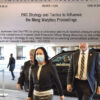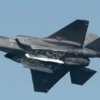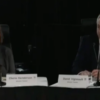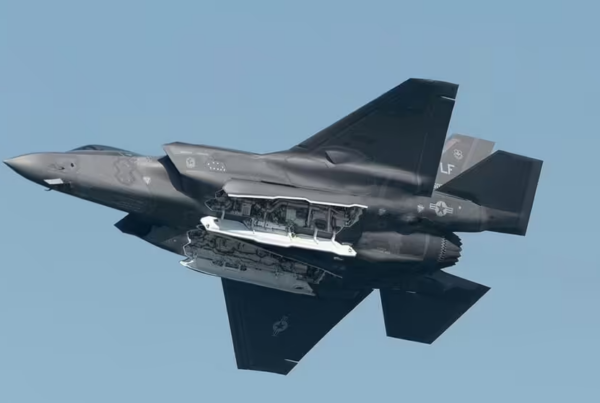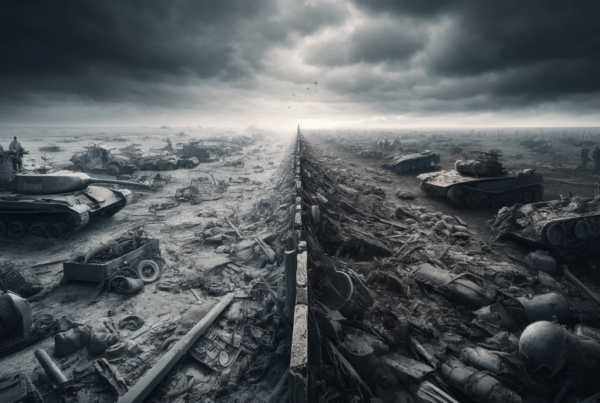Losing causes often generate catchy tunes – very often conducting their own separate reality. Consider the thrilling Scottish battle piece “The Haughs of Cromdale” which celebrates a battle which barely took place. In 1690, a scruffy handful of Scottish Jacobite rebels took off into the foggy hills on encountering a cavalry force, then re-emerged after the foe had cantered off for lack of opposition, declared they had won a major victory and wrote a song to prove it.
The bravely defiant “O Donnel Abu” was composed in the 19thth Century about an Irish uprising in the early 17th Century which was such a dismal failure that it made the colonization of Ulster possible for the English. To listen to the song would convey a very erroneous impression of severe fighting that never actually occurred.
For that matter, sore feelings and what-might-have-beens were a strong part of cultural and political narratives in the American south for at least a century after the end of the American Civil War. Germans had their own set of similar thoughts in the aftermath of the First World War, which helped lead them directly into the maw of an even worse war 20 years later.
All this should tell us to be especially wary of how the losers (and sometimes the winners) define events in a recently concluded conflict. We are reminded that we should be deeply sceptical, particularly of nationalist partisans, in the aftermath of a lost war.
These are good points to remember about the rump of the Tamil Tigers structure. Between the first assassination, of a federalist Tamil politician in 1975, by the founder of the Tamil Tigers, Villupillai Prabhakaran, and the destruction of their guerrilla army in May 2009, the Tigers waged a long and bloody civil war in Sri Lanka. From the start until the finish of the war; the Tigers insisted that they were a liberation army out to protect Sri Lankan Tamils from discrimination (later from genocide) by the Sri Lankan Sinhalese, and that they represented the best hope for the Tamil people.
In point of fact the Tigers killed thousands of Sri Lankan Tamils, including many from groups that rivalled the Tigers as well as some from peaceful political parties whose very existence gave the lie to the Tiger message of irreconcilable differences. Leaders from any source that did not acknowledge the supremacy of the Tigers and their leader, Prabhakaran, were always in peril of their lives; so were ordinary Tamils who defied the orders of the Tigers.
The death rate soared in the last six months of the conflict, but the reason for this has already been generally forgotten. When the Sri Lankan Army launched its blitzkrieg in the autumn of 2008, and caved in long-held Tiger defences, Prabhakaran gathered his remaining troops and holed up in a last enclave to make a final stand. Trenches and landmines weren’t his only defences; he also dragged tens of thousands of unwilling Tamils with him to act as human shields and a conscripted labour force. Hundreds of these were inevitably killed by the Sri Lankan Army artillery fire. Hundreds more Tamils were killed by the Tigers while trying to escape into the siege lines of the Sri Lankan Army; thousands successfully fled for safety into the arms of the “genocidal” Sri Lankan forces before the surrender occurred.
The Tigers and their supporters have always pointed to the 1983 riots in Colombo as the proof of their allegations about Sri Lankan genocidal policies towards the nation’s Tamil population. Outsiders are not expected to recall that the rioting resulted from a series of provocative attacks by the Tigers themselves; nor that the riots were never repeated during the 26 remaining years of the war. The Tigers made several attempts to provoke another severe reaction. This included the mass murder of hundreds of captured Sri Lankan soldiers in April 2000, and a bomb attack at the Temple of the Tooth at Kandy – sacred to Sri Lanka’s Sinhalese Buddhists. At no time since 1983 did the Sinhalese let themselves be so goaded again.
With the collapse of the Tiger guerrilla army and the long overdue death of Prabhakaran in May 2009, the Tigers’ political fronts abroad have tried to recreate the movement. One might think of a severed head of a hydra that is trying to first regenerate its body so that it can then grow some old heads back. These pathetic remnants desperately tried to prove that the Sri Lankan government was genocidal in intention, and are still pursuing this goal. One “proof” that they battened on was the use of internment camps in northern Sri Lanka as the military tried to deal with a massive influx of prisoners in May 2009.
Wealthier and more lavishly supported militaries than that of Sri Lanka have found coping with a massive influx of prisoners to be a daunting logistical task. Trying to build shelter, pipe in clean water, and find food, clothing, toiletries and medicine for hundreds of thousands of people in a few short days is never easy even for wealthy societies. Added to this was the urgent task of combing these masses for the surviving guerrillas and terrorists hidden among them. Moreover, many people couldn’t be returned immediately to their homes since the Tigers had left landmines and booby traps in abundance when they retreated and de-mining operations are never simple.
Crude, guarded camps were surrounded by barbed wire and the Tigers were quick to declare these as concentration camps and allege that Bergen-Belsen and Dachau had been reborn. The story has failed to resonate in the outside world, partly because the Sri Lankan government fended off NGOs it didn’t trust (with reason), but also because by May 2010 some 74% of the estimated 300,000 persons had already been released.
The May, 2010 victory of the Sri Lankan military decapitated the Tigers, especially as Prabhakaran and many of his top subordinates were killed. Prabhakaran was killed trying to escape inside an ambulance. The two surviving components of the Tigers are their political fronts controlling the Diaspora and much of their organized criminal network. However, the August, 2009 capture of Shanmugam Kumaran Tharmalingham (aka ‘KP’, among other aliases) stripped the international criminal network of its main leader and he has been reportedly cooperating fully with Sri Lankan authorities and various foreign police agencies in discovering the remains of the international criminal network.
Despite this, there are sundry assets and networks of the Tigers still at large around the world. It was inevitable that they would continue with organized criminal activities, particularly with people smuggling. The Tigers also had considerable experience with international shipping, counterfeiting, and running their own maritime operations. There has long been good reason to believe the political arm of the diaspora and the criminal arm were perfectly capable of working hand in glove when necessary. Enter the latest instalment of the Tiger narrative.
People smuggling is a lucrative business as the Tigers would know since they have been engaged in people smuggling since before 1983. What makes them different is the care they bring to their customers. Historically, if they were securely docked in a safe country, they could start making regular contributions to the Tamil Tigers. Human trafficking where smuggled people are diverted to prostitution or virtual slave labour is seldom practiced.
In October 2009, 76 Tamils steamed into Canadian waters aboard a beat-up rust bucket of a coastal freighter that apparently was formerly owned by the Tamil Tigers. Once it was proved that Canada had to haul in the occupants and give them refugee hearings, in contrast to Australia and other nations that have been visited by boats carrying aspiring Tiger refugee applicants, it was clear that more boats would come. Now we come to the 492 arrivals on the MV Sun Sea in August 2010 and the cascade of instances of ‘terminological inexactitude’ that ensued from this incident.
The UN has advised that Sri Lanka is no longer a refugee producing country. On July 5, 2010 the United Nations refugee agency guidelines stated that Sri Lankans originating from the north of the country are no longer in need of international protection under broader refugee criteria or complementary forms of protection solely on the basis of risk of indiscriminate harm.
“In light of the improved human rights and security situation in Sri Lanka, there is no longer a need for group based protection mechanisms or for a presumption of eligibility for Sri Lankans of Tamil ethnicity originating from the north of the country”.
Australia followed suit a week later and pointed out that conditions in Sri Lanka had greatly improved and stabilized, to the point where Sri Lankan Tamil asylum seekers may not be refugees under the UN Refugee Convention.
Nothing of this was commented on by the Diaspora voice pieces. Instead, the Canadian Tamil Congress seemingly tried to give us the impression that the people on the Sun Sea had somehow slipped out between the strands of barbed wire around the detention camps and made their way to Canada directly from Sri Lanka. Later, the Globe and Mail located the staging areas for the next set of ‘boat people’ in Thailand and Malaysia in hotels and remote towns. These refugees are already coming from third countries and not from Sri Lanka.
It was soon clear that many of the passengers aboard the Sun Sea had paid upwards of $45,000 for the passage to Canada, and yet we are asked to consider them as poor refugees who had fled persecution with little more than the clothing on their backs. Also, considering that Tamil people smugglers have been successfully flying other would-be refugee claimants to Canada for decades, safely and conveniently aboard modern airliners for $30-40,000 per head, one has to wonder at the whole optics of the boat trip.
There were outrageous appeals for sympathy from some of the passengers aboard the Sun Sea. Petti Fong, a Toronto Star reporter who interviewed some of the female passengers quoted one ( “3 Months on the Sun Sea: Tamil Migrants describe their Voyage” Toronto Star, August 21st, 2010) as saying they only had a quarter litre of fresh water per person per day during the months it took the ship to reach Canadian waters. Here is a simple fact: A woman weighing 50 kilos who is not exerting herself while in a warm climate (letting alone the fierce sunlight that can occur in the Indian and Pacific oceans) will still require 1.4 litres of drinking water every day. Drinking only a quarter litre would result in death by dehydration in a very few days.
The MV Sun Sea was very overcrowded with 492 people, and could not have possibly carried them and the food and water necessary for the three month crossing from the Indian Ocean. As well, its engines and desalination gear could not have continued working with such a heavy load for so long. Nor could the ship (a coastal freighter designed for South Asia) have carried the fuel for such a long journey. Despite the impression of one continuous desperate voyage, the ship must have either made frequent stops en route to Canada, or else it frequently made rendezvous with a supply ship to top up its fuel and water. It is probably also a safe bet that all 492 people aboard were not there when the ship began its voyage.
Other Sri Lankan Tamils living outside Sri Lanka have already been heading back in increasing numbers. This supports the contention that the situation in the country has much improved and that Tamils are no longer in danger there although it should be remembered that many of them were in greater danger from the Tigers than they were from other sources. This begs the question: Are we actually seeing members and supporters of the Tamil Tigers coming to Canada in well-founded fear of persecution by other Tamils?
It is always a useful practice to question everything one hears, especially from those who had invested so much of themselves in a conflict that has been lost. It was always useful before to take anything said by the mouthpieces of the Tigers with a healthy dose of skepticism; it seems necessary now.

